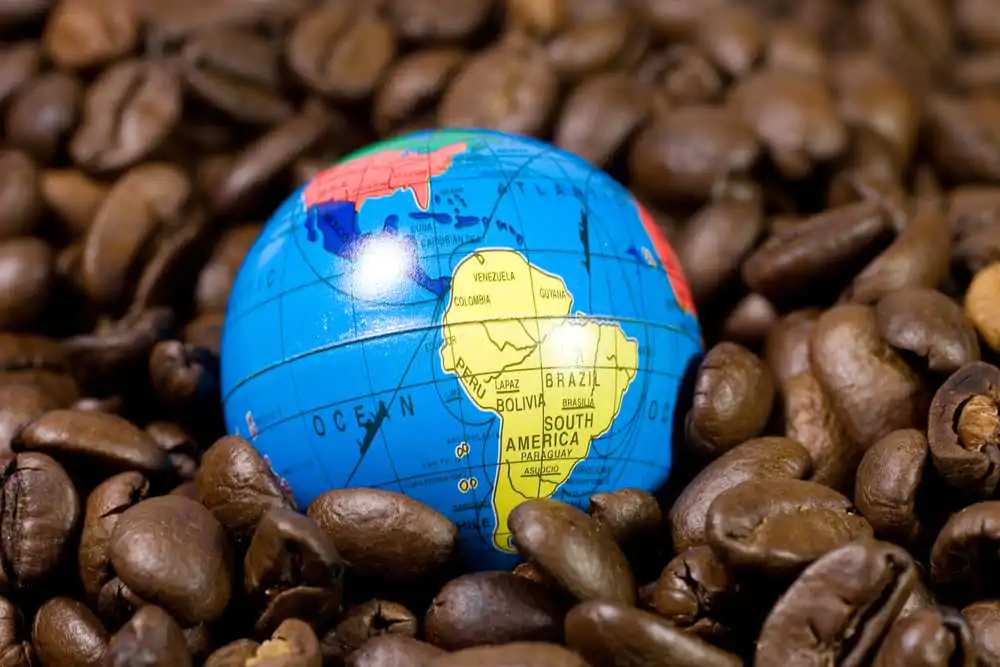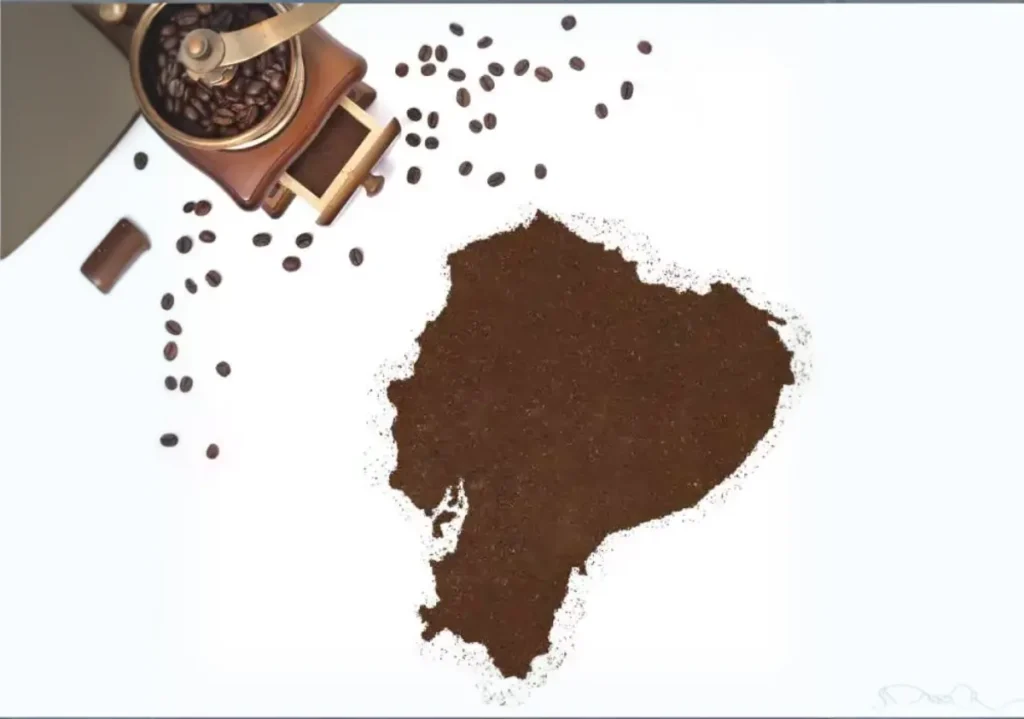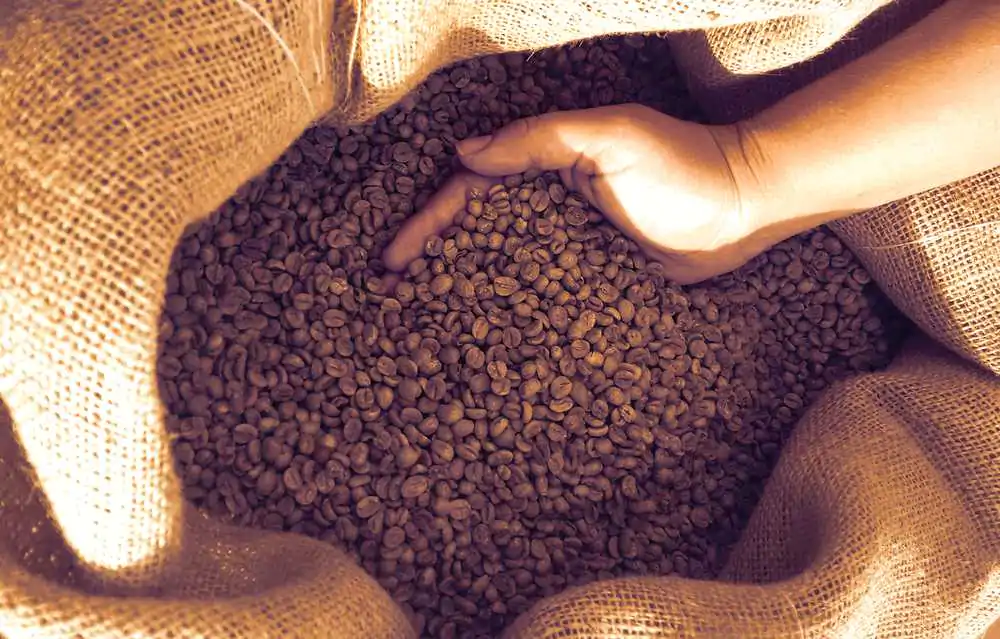Are you looking to try coffee from all around the world? Today, we’ll review the best Central and South American coffee brands for you to put on your shopping list.

Looking for the best Central and South American coffee brands is no easy task with so many of them on the market. The crop was introduced to the continent in the early 1700s, and these days, much of the world’s coffee comes from South America– it accounted for approximately 46% of the coffee harvested during the 2021-2022 growing year.
Although coffee is believed to have been discovered in Ethiopia, most Central and South American countries have the perfect climate and landscape for coffee cultivation. Coffee requires very specific conditions to grow such as warm temperatures, humidity, and nutrient-dense soil. With such ideal conditions, it’s no wonder Central and South American coffee is so popular.
Today, we’ll review Central and South American coffee-producing countries and the brands that best represent them. Don’t forget to also check out our article on the best African countries for coffee. Let’s dive in.
Colombian Coffee Brands
Today, Columbia is the third-largest coffee producer in the world, beaten only by Brazil and Vietnam. The country accounts for about 12% of the world’s coffee.
There are five growing zones and 19 sub-regions in Colombia, covering an area of 914,000 hectares. Most of it is mountainous, with altitude reaching over 5,000 feet. In such conditions, coffee beans grow slowly, which gives them a less acidic and more complex flavor profile.
Colombian coffee is generally known for its smoothness and sweet taste. Depending on the region, the flavors can range from fruity to nutty. Colombian coffee also has a medium body and mild acidity, which makes it easy to drink.
If you’re looking for authentic Colombian beans, this single-origin java by Peace Coffee is an excellent choice. These beans have a balanced flavor, with prominent notes of brown sugar, stone fruit, and cloves.
This coffee is certified organic and Fair Trade. Peace Coffee is a B-Corp, meaning the whole process from bean to cup meets high standards in terms of social, economic, and environmental performance.
Brazilian Coffee Brands
Brazil supplies about one-third of the world’s coffee, making it the world’s largest exporter. Given how huge the country is, this doesn’t seem surprising until you take into account that an average elevation is only about 3,500 feet.
Low altitude means low acidity, which works well for the varietals typically grown in Brazil. The most commonly grown ones are Bourbon, Catuaí, Acaiá, and Mundo Novo, all of which thrive at medium elevation.
Aside from Arabica, Brazil also grows Robusta. In fact, it grows around a quarter of the world’s Robusta coffee.
Among the most notable coffee-growing regions in Brazil is Cerrado, which is where this single-origin coffee by Fresh Roasted Coffee comes from. This coffee has a bold body and prominent notes of cocoa and walnut. Even though it’s roasted to a medium-dark level, the coffee doesn’t have that burnt finish associated with many darker roasts.
Peruvian Coffee Brands
Peru is the third-largest coffee producer in South America, as well as 11th in the world. As an extremely mountainous region peaking at an elevation of 5,100 feet, Peru is ideal for growing coffee.
About 75% of the coffee-growing area lies at an elevation between 3,300 and 5,900 feet. The climate in the Andes mountains allows the beans to grow slowly and develop a more nuanced flavor profile.
Of course, every region has its terroir which determines the flavor of the coffee. But some of the most common descriptors of Peruvian coffee are sweetness, light body, intense brightness, and powerful aroma. The tasting notes range from nutty to slightly citrusy.
If you’re trying Peruvian coffee for the first time, Mount Comfort is the way to go. The coffee is roasted to a medium level, which perfectly annunciates the well-rounded flavor profile.
Grown on small farms in the Chanchamayo and Chontali regions, these coffee beans make a delicate and smooth cup of java. The combo of soil, altitude, and climate results allowed prominent notes of nuts, chocolate, and citrus to develop.
Costa Rican Coffee Brands
Costa Rica might be a small country, but it has an altitude going from sea level to more than 12,000 feet. However, coffee is mainly grown at altitudes ranging from 4,000 to 5,500 feet. The region devotes 93,700 hectares of land to growing the crop.
The soil of Costa Rica is mainly volcanic, which provides plenty of minerals for the coffee plant. As a result, coffee grown in the country has a very defined and deep flavor profile.
With such a diverse climate, not all Costa Rican coffee tastes the same, but you can typically expect some sweetness and moderate acidity. The more nuanced notes can range from honey and chocolate to grape and molasses.
If you’re just getting into Costa Rican coffee, Volcanica offers a variety of single-origin coffees. One of the best ones is the peaberry, cultivated in the Tarrazu region near San Marcos. Shade-grown at an altitude of 5,200 feet, this coffee is mildly sweet and bright, with notes of honey, almond, and lemon.
Ecuadorian Coffee Brands

The equatorial climate makes Ecuador special as it allows for year-round coffee harvesting. The country produces 7.97 thousand metric tons of coffee, which is less than 1% of the world’s java. Still, Ecuador is committed to quality, which helps in the country’s visibility on the coffee scene.
Unlike most South American countries, Ecuador cultivates both Arabica and Robusta. This also makes the country one of only 15 to do so. Many varietals are grown in the country, including Bourbon, Sidra, Cattura, and Typica.
What can you expect from a cup of Ecuadorian coffee? Well, that depends on the microregion it’s grown at. From hints of fruit and flavor notes to a chocolaty finish, there’s a wide range of flavors you can taste in your cup.
Wisdom Coffee will provide you with an authentic Ecuadorian experience. The brand’s Ecuadorian dark roast is carefully created to captivate some of the most prominent nuances of coffee from this country. It’s bold and complex, with hints of nuts and dark chocolate, coupled with a subtle caramel finish.
Venezuelan Coffee Brands
Venezuela has a diverse landscape and was once almost as productive as Colombia when it came to coffee cultivation. It now produces less than 1% of the world’s crop.
After World War II, the oil industry grew significantly, at the expense of the coffee industry. This is quite a shame, given how great the Venezuelan growing conditions are for coffee plants.
Venezuelan coffee shares some traits with Colombian coffee, namely pleasant acidity, slight chocolate tones, and a sweet finish. Grown in the shade, the coffee cherries ripen slowly, creating a more vibrant and complex flavor profile.
Royale Creme by Cucuy Coffee represents the perfect Venezuelan flavor profile. The coffee is grown in the Andes, at altitudes ranging from 5,200 and 6,500 feet. Medium-roasted, these beans provide an explosion of flavors, with notes of chocolate, caramel, and a dash of citrus.
Guatemalan Coffee Brands
Compared to most Central and South American countries, Guatemala doesn’t have a long coffee-growing tradition. The nation only began commercially growing coffee in the mid-1800s. That, of course, hasn’t stopped it from becoming one of the top ten coffee-producing countries in the world.
Guatemala has many coffee-growing regions, all situated at altitudes above 4,000 feet. Coffee cultivated in these regions is rich and bright, with subtle chocolate and winey notes. The toffee-like sweetness balances out the flavor, creating a well-rounded experience.
That’s exactly how the Guatemala offering by Bones Coffee Company tastes. Grown in Antigua, the coffee flavor is influenced by the microclimate. Subtly citrusy and with hints of cocoa, this coffee has a velvety mouthfeel that mellows down the strong taste.
Paraguayan Coffee Brands
Paraguay doesn’t play a huge role in global coffee production – it makes up for less than 0.1%. Still, that’s not to say coffee from this country is bad. The country’s geography allows for only 27,500 hectares of coffee cultivation, so it can’t produce as much as other South American regions.
Most of the growing regions are concentrated around the border with Brazil. The elevation is topped at 2,500 feet above sea level, which is why Paraguayan coffee is low in acidity.
The flavor profile is rather balanced. The mild brightness pairs well with notes of chocolate and nuts. Of course, every microclimate brings something else to the table, so expect more nuances from your cup.
Coffee Around The World has some of the best Paraguayan beans on the market. The brand’s medium roast is sweet and rounded, with no bitterness and just a hint of acidity.
Bolivian Coffee Brands
Bolivia is only the 37th coffee producer in the world. Regardless, the country enjoys worldwide popularity regarding its coffee. With elevations of above 4,000 feet, the beans can grow slowly, thus developing a bolder and more complex flavor.
What can you expect from Bolivian Java? Typically, it’s sweet and has a mild acidity. Depending on the growing region, you can also taste prominent notes ranging from apricots and flowers to cocoa and hazelnuts.
The main coffee varietal is Typica, with Caturra and some Catuai also available. For those trying out Bolivian coffee for the first time, Fincas Valverde’s Catuai beans will provide an interesting flavor experience. This coffee is delicate, with notes of dried plum, tangerine, and sugar cane.
Argentina Coffee Brands

Argentina is a South American country mostly unsuitable for growing coffee as the climate is too dry for coffee plants to thrive.
As a result, Argentina imports most of its coffee from Brazil. The little coffee that is cultivated in Argentina is of a lower quality compared to most other coffee on the continent. For this reason, sugar is added to coffee to hide the bitterness and create a more delicate and rounded flavor profile.
Morenita has mastered the method of enhancing aroma and flavor while hiding less desirable traits. The brand’s Café Torrado Molido blend includes both Arabica and Robusta beans to create a balanced cup of coffee.
If you liked this post, you might also be interested in our list of Kenya coffee facts.

